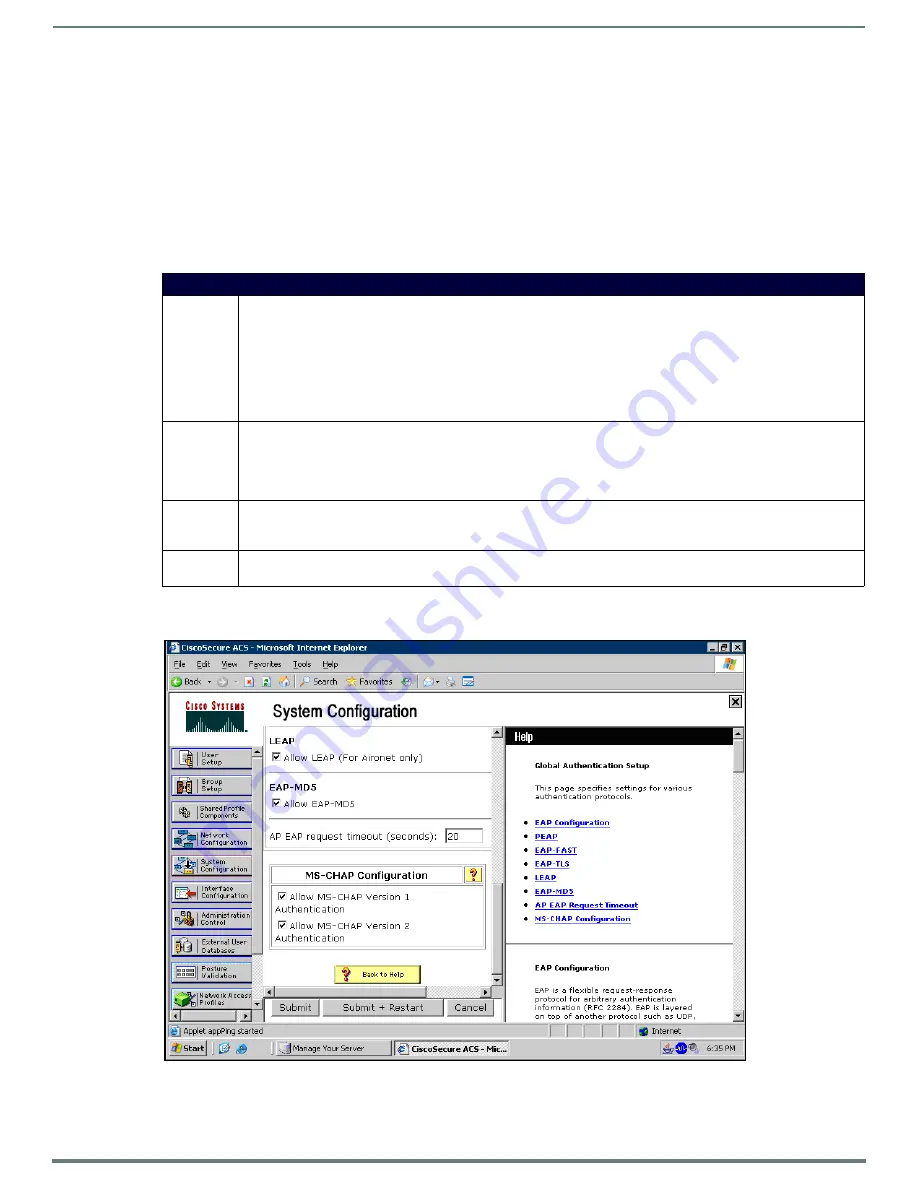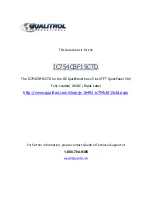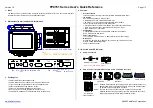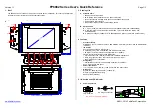
Protected Setup Pages
60
MVP-5200i Modero® ViewPoint® Touch Panel with Intercom - Instruction Manual
EAP-LEAP
In the
Wireless Security: Enterprise Mode
popup window (FIG. 62), press the
Security Type
field to select
EAP-LEAP
.
EAP (Extensible Authentication Protocol) is an Enterprise authentication protocol that can be used in both wired and wireless
network environments. EAP requires the use of an 802.1x Authentication Server, also known as a Radius server. The configuration
fields described below take variable length strings as inputs. An on-screen keyboard is opened when these fields are selected.
LEAP (Lightweight Extensible Authentication Protocol) was developed to transmit authentication information securely in a wireless
network environment.
NOTE:
LEAP does not use client (panel) or server (RADIUS) certificates, and is therefore one of the least secure EAP security methods.
However, it can be utilized successfully by implementing sufficiently complex passwords.
EAP-LEAP security is designed for wireless environments where having a client or server certificate validation scheme in place is
not required, yet necessary to transmit data securely over a wireless network.
Refer to the
EAP Authentication
section on page 136 for further details on these security options.
Refer to FIG. 64 for an example of how a typical EAP-LEAP system configuration page should appear.
EAP-LEAP
SSID:
Opens an on-screen keyboard to enter the SSID name used on the target AP.
The SSID is a unique name used by the AP, and is assigned to all panels on that network. An SSID is required by the AP
before the panel is permitted to join the network.
• The SSID is case sensitive and must not exceed 32 characters.
• Make sure this setting is the same for all points in the wireless network.
• With EAP security, the SSID of the AP
must
be entered. If it is left blank, the panel will try to connect to the first access
point detected that supports EAP. However, a successful connection is not guaranteed because the detected AP may be
connected to a RADIUS server, which may not support this EAP type and/or have the proper user identities configured.
Identity:
Opens an on-screen keyboard. Enter an EAP Identity string (used by the panel to identify itself to an Authentication
(RADIUS) Server).
Note: This information is similar to a username used to login to a secured server or workstation. This works in tandem with
the Password string which is similar to the password entered to gain access to a secured workstation. Typically, this is in the
form of a username such as jdoe@amx.com.
Password:
Opens an on-screen keyboard. Enter the network password string specified for the user entered within the
Identity
field
(used by the panel to identify itself to an Authentication (RADIUS) Server)
Note: This information is similar to the password entered to gain access to a secured workstation.
Cancel/Save: • Cancel - discard changes and return to the previous page.
•
Save
- store the new security information, apply changes, and return to the previous page.
FIG. 64
EAP-LEAP sample Cisco System Security page
















































